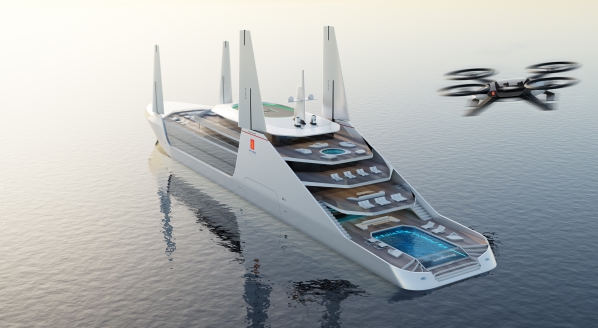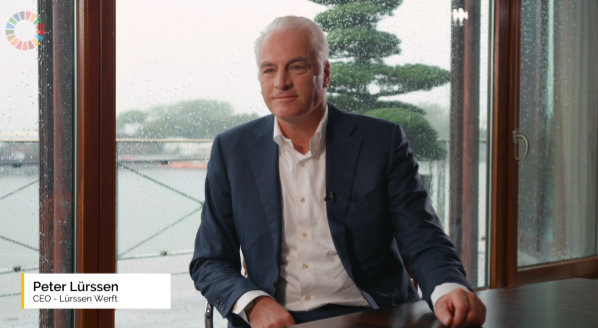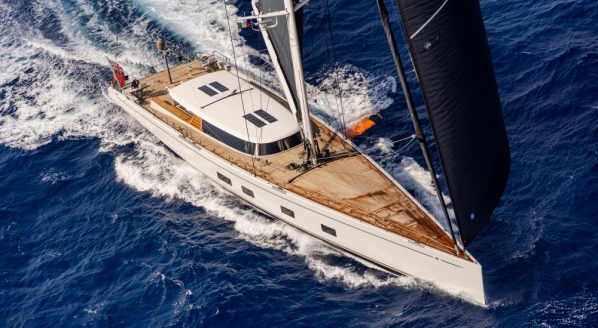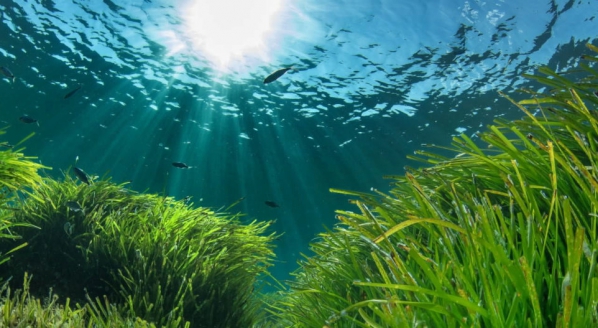Today’s technology uptake driven by sustainability
Eco-efficiency is a key consideration in a sector where many new technologies are trialled, says Engel-Jan de Boer, Lloyd’s Register yacht segment manager…
The superyacht industry is the Formula 1 of the shipping industry, where many of the latest technologies are trialled. It is a hugely fertile ground with owners wanting to participate in exciting new projects, which can then be upscaled to the commercial shipping world. For far too long, the industry has had an image of tycoons and villains owning and operating yachts for their own entertainment, but the opposite is evident in the projects we have been involved with recently in this sector.
Focus on eco-efficiency
In fact, the high-net-worth individuals who own these luxury superyachts are a fascinating bunch. They have sharp minds, a close attention to detail, and a desire to understand and pioneer new technologies whenever possible. Today, many of them are closely focused on eco-efficiency and sustainability.
A key differentiator of this sector is the fact that steady growth rarely falters and there are always plenty of new vessels at design, construction and commissioning stages. And LR’s existing market share – 42 per cent of the 5,567 vessels of all sizes currently in service – means that the class society is well placed to track the latest technology developments and win more superyacht business.
It’s worth noting that across the environmental considerations that are climbing the agendas of yacht owners, interest in wind is strengthening. More are now interested in sailing vessels, such as the three-masted 106.7m Black Pearl, delivered in 2018, while many are adopting hybrid power systems with batteries, including the recently delivered M/Y Dreamboat and M/Y Bravo Eugenia.
A trailblazer here was the 2012-built sailing vessel Rainbow, a J-Class vessel based on the lines of the original 1934 America’s Cup winner, designed by William Starling Burgess. The LR-classed vessel has a classic interior true to the 1930s, but a modern hybrid propulsion and power system specially designed and engineered for the vessel.
Technology transfer
Solar power and other sources of energy are hot topics, including sails with solar panels, which reinforces the pressing need to keep abreast of the latest developments. We published Rules and Regulations for Sail-Assisted Ships last year and this July, we launched Requirements for Wind Propulsion Systems, a development from the experience and know-how LR has with sailing yachts now being extended and transferred to commercial ships.
A range of other sustainability features are now also found on owners’ shopping lists. Cyber security, data analytics, glass constructions, 3D plan approval techniques and environmentally friendly solutions such as hydrogen and battery propulsion are among developments that are catching the eyes of more environmentally conscious and forward-looking owners.
Since many yachts are used both for their owners’ pleasure and business, top-notch connectivity is essential, so the very latest communications technologies are to be found on these vessels. The availability and use of data are also changing the way we work with yachts and their owners in this sector. Systems and components are becoming more autonomous, allowing for remote condition monitoring and predictive maintenance.
This is already having an impact on the way class societies operate. Remote inspection techniques are often used now for smaller tasks such as verifying that a repair has been undertaken and completed and ensuring that minor damage has been rectified. The environmental footprint of construction, operation and maintenance has become, and will remain, a hot topic.
And the industry is developing a Yacht Environmental Transparency Index (YETI) to make owners even more aware of their environmental profile. The drive for owners to reduce their eco-footprint is good news for LR as it generates significant demand for our core classification and consultancy services.
Power of the wind
As to the future, wind power will play an important part in the sector’s propulsion developments. These are also likely to have a bearing on wind propulsions in the commercial sector, an area which has great potential.
If slower steaming becomes the norm and global economies are less reliant on the ‘just-in-time’ principle, of which COVID-19 has demonstrated the dangers, rotor sails and ventifoils will probably become more common. There’s doubt that there will be a push towards fully sail-operated vessels, but on some trade routes and liner services, these could be possible.
Actual propulsion systems using wind vary in configuration and we have been involved in a range of different technologies. Our rules and regulations apply to the rig insofar as this structure is used for propulsion purposes. The actual propulsion force may be generated by sails that are hoisted on the mast (a fore-and-aft rig, for example), rotation of the mast structure itself as in the Flettner rotor concept, or other ways of capturing wind force and transferring it to the hull. In a way, we are going back to our roots in 1760, when wind power was the only source of propulsion.
Profile links
NEW: Sign up for SuperyachtNewsweek!
Get the latest weekly news, in-depth reports, intelligence, and strategic insights, delivered directly from The Superyacht Group's editors and market analysts.
Stay at the forefront of the superyacht industry with SuperyachtNewsweek
Click here to become part of The Superyacht Group community, and join us in our mission to make this industry accessible to all, and prosperous for the long-term. We are offering access to the superyacht industry’s most comprehensive and longstanding archive of business-critical information, as well as a comprehensive, real-time superyacht fleet database, for just £10 per month, because we are One Industry with One Mission. Sign up here.
Related news

Sustainable yachting: innovative solutions for the future
Kongsberg Maritime discusses the main trends with regards to emerging technology in the maritime industry
Technology

‘Knowledge is the fuel of innovation’
Lateral Naval Architects on its involvement with Oceanco NXT and building the next generation of yachts
Design

Lürssen talks sustainability
As part of the “50 Sustainability Climate Leaders” project, Lürssen discusses the work being done to protect the oceans
Business

WRF launches Database of Sustainable Solutions
By verifying sustainable solutions, the platform will help the industry reduce its environmental impact
Business

Hydrogeneration: crossing oceans without a drop of fossil fuel
Baltic Yachts is enabling its clients to dramatically reduce their environmental footprint and fuel costs
Technology

New maritime regulations in French waters
French authorities have published three decrees on the protection of seagrass-beds
Business
Related news
‘Knowledge is the fuel of innovation’
5 years ago
Lürssen talks sustainability
5 years ago
WRF launches Database of Sustainable Solutions
5 years ago
New maritime regulations in French waters
5 years ago
The environment and beyond
5 years ago
Project Menorca yields positive results
5 years ago
The evolution of the electric superyacht tender
5 years ago
NEW: Sign up for
SuperyachtNewsweek!
Get the latest weekly news, in-depth reports, intelligence, and strategic insights, delivered directly from The Superyacht Group's editors and market analysts.
Stay at the forefront of the superyacht industry with SuperyachtNewsweek




